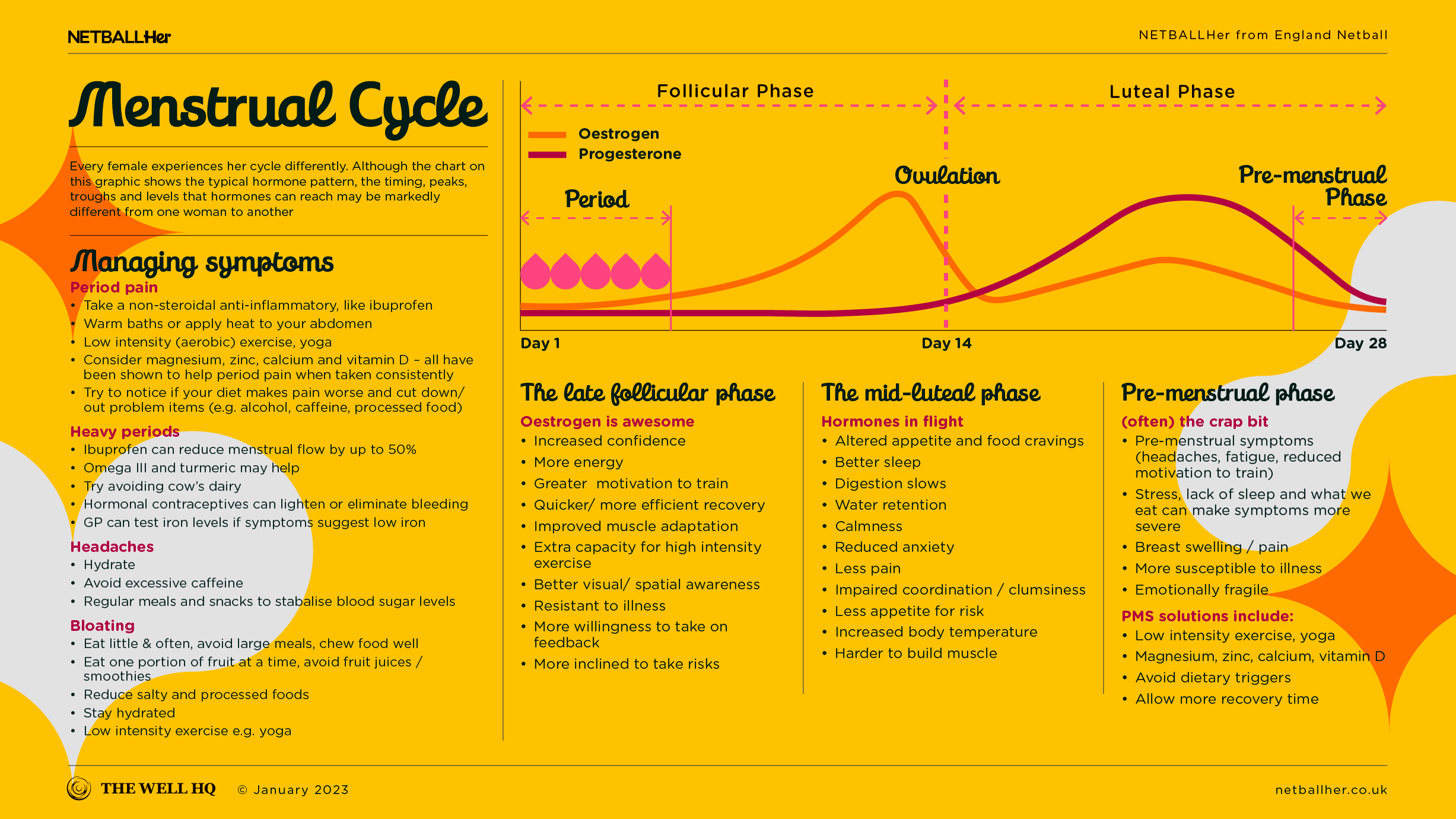Click play for an audio readthrough of this article
Your menstrual cycle is amazing – fact! During a healthy cycle, the hormones – oestrogen and progesterone – are rising and falling busily preparing your body to release an egg which, if fertilised by sperm, will implant itself in your beautifully prepared womb and grow into a baby.
Granted, unless you’re trying to get pregnant you don’t really need the menstrual cycle’s amazing baby-growing powers, but regardless, each month our hormones work hard to prepare that cosy nesting space just in case. And then, each month if we don’t conceive, our clever body says, “don’t sweat it, I’ll have a tidy up in here and get ready to go again next month.”
At its simplest, that is the menstrual cycle.
It’s that time of the month
The word ‘menstrual’ comes from the Latin word ‘mensis’ – meaning ‘month’. Your period is often referred to as a monthly cycle or ‘time of the month’ because a typical cycle is 28 days long. However, only about 13% of women have a 28-day cycle, and a healthy cycle length can vary from 24 to 38 days, with cycles in teenagers extending anywhere up to 45 days. During peri-menopause it may shorten down to 21 and lengthen to 60 days.
Some women will experience a cycle as regular as clockwork – exactly the same length every time – but many women experience cycle lengths which vary by up to eight days per month. And that’s totally normal.
The menstrual cycle is more than just having a period. It is a whole cycle of hormonal fluctuation which, when healthy, will happen predictably every month. Cycle hormones don’t just help us reproduce; they influence almost every body system, from our brain to our bones, to our digestion.
As hormones rise and fall across the cycle, we can feel their effects both physically and emotionally.
The cycle starts in the brain
While the two lead characters in your cycle plotline are oestrogen and progesterone, it’s actually the brain which is in control of your cycle. The brain releases other important hormones that tell your ovaries to select and prepare the ‘best’ egg and then release it.
What eggs-actly is ovulation?
In a survey by the Clue Menstrual Cycle Monitoring App, 64% of women didn’t know what ovulation means. Ovulation is the name for when an egg is released from your ovary. Your egg will live for up to 24 hours, waiting to be fertilised by sperm (although it’s important to remember that you can still get pregnant if you have sex six days before your egg is released at ovulation).
Interestingly, there is a popular belief that in each cycle we release our egg from alternating sides of our ovaries – we have two ovaries, one on the left side and one on the right side – but it’s actually more random than that – it just ends up roughly 50/50 over time. Ovulation usually occurs around the middle of the cycle, but it’s hard to predict exactly when because you may not always have a consistent cycle length. If you are someone who’s cycle length varies from month to month, it’s usually the first half that influences cycle length, as the second half remains quite consistent.
When your egg is released it moves along the fallopian tube, which connects the ovaries with the uterus, and if it’s not fertilised by sperm within 24 hours, its incredible journey comes to an end and it dies.
The empty follicle, which once held the growing egg, turns itself into a temporary gland called the corpus luteum, and it starts to produce progesterone. It also continues to produce oestrogen and the two hormones become elevated in this second half of the cycle known as the luteal phase – the name is related to ‘corpus luteum’.
Premenstrual pandemonium
If your egg is not fertilised by sperm the body gets ready to close out this cycle and start the next. The hormones fall quite rapidly towards the end of the cycle, and this time of plummeting hormones is often known as the premenstrual phase.
Rather than being ‘hormonal’ at this time of your cycle, your body is experiencing a ‘hormone hangover’ as the levels of the two cycle hormones drop, taking with them all the positive effects they were having in your body. It’s normal and common to experience symptoms during this time of your cycle, but they should be mild and manageable. If they interfere with doing the things you want to do, like your sport, then you should see your GP or explore strategies to alleviate your specific symptoms.
Premenstrual symptoms
There have been 150 reported premenstrual symptoms, but the most common are:
- Spots
- Headaches
- Abdominal pain / cramping/ bloating
- Diarrhoea
- Constipation
- Nausea
- Weight fluctuation
- Fatigue
- Pain in back / breasts/ legs/ pelvis
- Emotional changes
- Irritability Breast pain
- Emotional sensitivity
- Food cravings
- Lethargy /decreased energy levels
- Clumsiness / reduced coordination
Cycle over. Period.
Following the premenstrual phase, your next period starts. The first day of bleeding is the first day of your cycle so if you want to track the length of your cycle you count from the first day of bleeding right up until the day before the next period starts.
The period is when the lining of the uterus (womb) leaves the body via the vagina in the form of blood and tissue. Each cycle, the body builds up a fresh new lining in the uterus in case a fertilised egg needs a cosy spot to grow into a baby. If it doesn’t, we shed the lining of the uterus and prepare another new, fresh lining during the next cycle.
It’s normal for your period to last anything up to eight days, although for some women their period is much shorter than that. The first couple of days will probably be the heaviest flow, and it becomes progressively lighter.
Having a healthy period each cycle is a thumbs up for your general health and wellbeing and, as a netballer, it’s a sign that you’re getting enough energy from your diet to fuel all the training you’re doing.
Speak to your GP if:
- You miss a period for more than three months
- You have a heavy flow that you find hard to manage without frequent changes of period product (every two hours or less)
- Your period lasts more than eight days
- You have bleeding between your periods
A life-cycle
This amazing biological rhythm happens from the moment you start your periods, cycle after cycle, until you reach menopause, only stopping when you are pregnant (or you start to use a hormonal contraceptive). We spend about 40 years of our life with a menstrual cycle, that’s about 450 cycles in all.
It is normal for your cycle to change throughout your lifetime: cycle symptoms are often more severe during adolescence and cycles can change a lot after having babies.
Remember, a healthy cycle should be regular, with mild and manageable symptoms, and a manageable period. If yours isn’t then there are lots of things that can help: what and when you eat, how you exercise, you sleep and how you cope with stress management can all impact how your cycle and how it affects you.
For those with very severe symptoms there are medical approaches to help, and you can read more about menstrual cycle dysfunction throughout the Menstrual Cycle category on the NetballHer website.
As a reminder, the content of the course belongs to The Well HQ. You have permission to access and use the content yourself or, if you are an organisation, for the number of users selected, but are not otherwise permitted to share such content with others, all in accordance with our Course Terms and Conditions.

